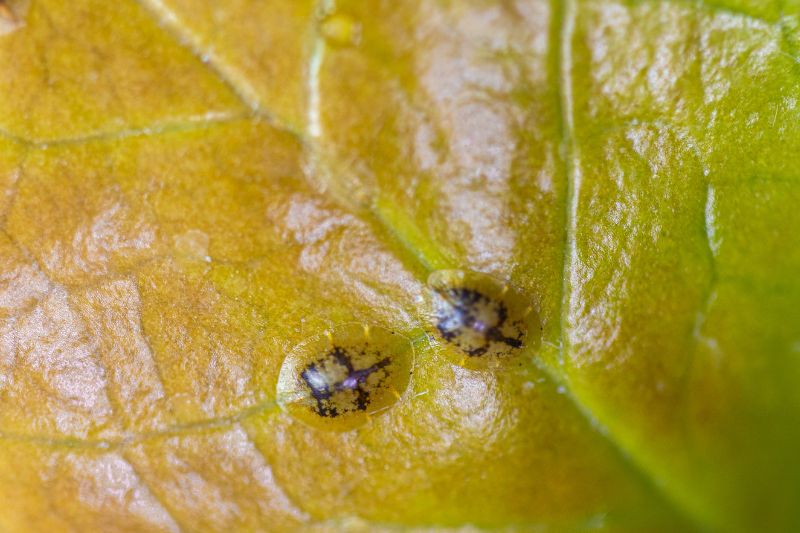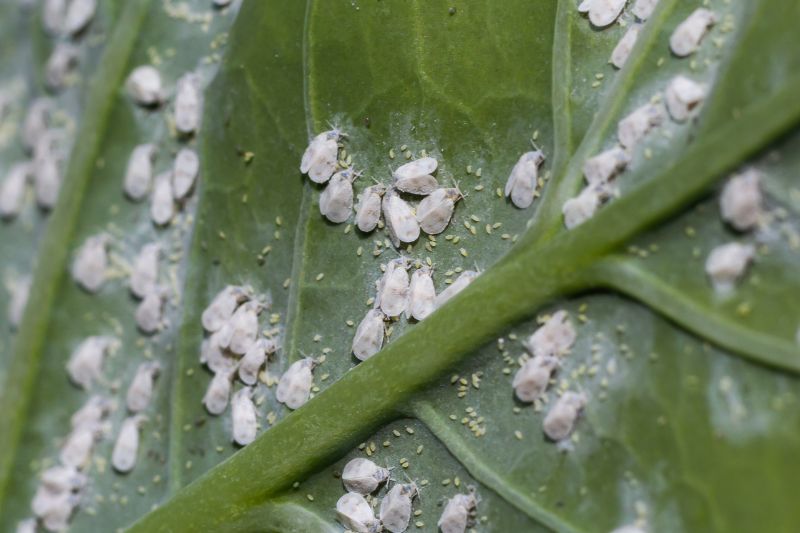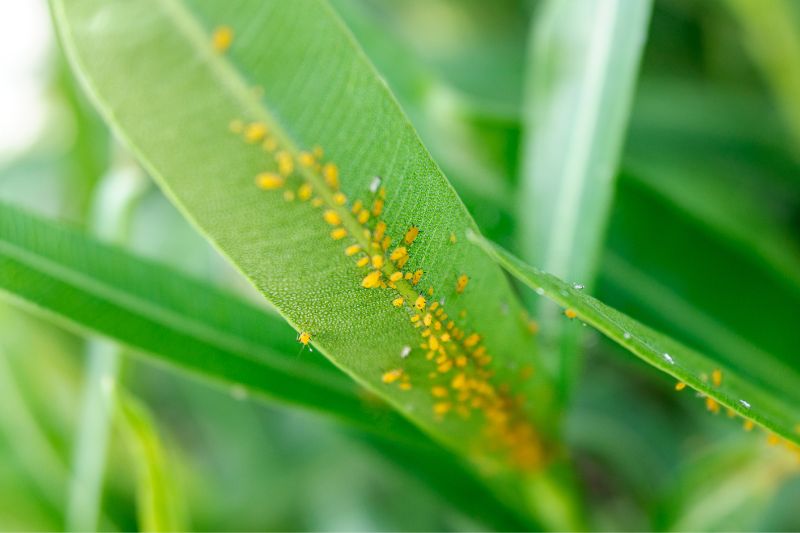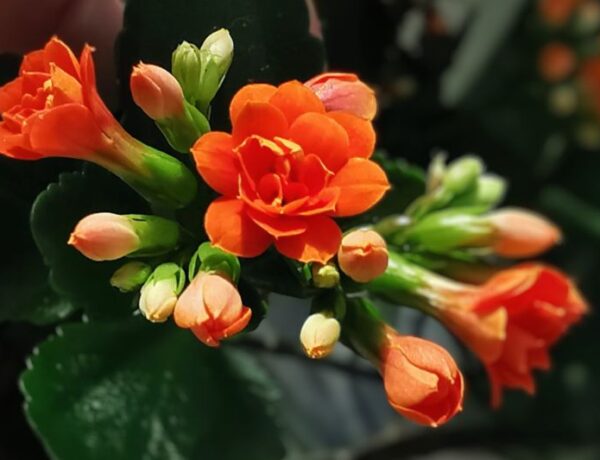Keeping your houseplants healthy and free of pests can be a daunting task. Indoor plants are susceptible to a variety of pests, including spider mites, mealybugs, and scale insects. If left unchecked, these pests can damage or even kill your beloved greenery.
But don’t worry! In this comprehensive guide, we’ll provide you with all the knowledge and tools you need to identify, prevent, and control pests in your indoor garden.
Table of Contents
1. Scales

Identification: Scales are tiny, flat insects that come in a variety of colors and sizes. They cling to the stems and leaves of your beloved houseplants, which makes it crucial to identify these indoor plant pests early on.
Damage: They feed on plant sap, resulting in wilting and leaves falling off. Additionally, their excretions, referred to as honeydew, can promote mold growth on your plants.
Management: To combat scales, begin by physically removing visible scales with a soft cloth or a soft toothbrush. For more severe infestations, apply horticultural oil or insecticidal soap, following the label instructions. Keep in mind that you might have to apply the treatment multiple times.
Prevention: Before introducing new plants to your home, give them a thorough inspection, and keep them separated from your existing plants for at least two weeks. This quarantine period will help ensure that they aren’t bringing in any unwanted pests.
2. Mealybugs

Identification: Mealybugs are small, soft-bodied insects that are relatively easy to identify due to their distinct appearance. They are covered in a white, waxy, powdery substance, giving them a cottony or mealy appearance. These insects tend to cluster together in groups and can be found on the undersides of leaves, along the stems, and in the crevices of your plants.
Damage: Mealybugs suck sap from the plant tissue, leading to yellowing leaves and stunted growth. Like scales, mealybugs excrete honeydew, which encourages mold growth.
Management: It can be a challenge to eliminate mealybugs. For light infestations you can use a cotton swab dipped in rubbing alcohol to gently remove them from the plant. For larger infestations, spraying your plants with insecticidal soap or neem oil, adhering to the label directions, might prove beneficial. However, that’s not always successful.
Prevention: Provide proper care for your plants, including regular watering and fertilization, as healthy plants are less likely to attract pests.
3. Spider Mites

Identification: Spider mites are minuscule, spider-like arachnids that are difficult to see with the naked eye. They are typically found on the underside of leaves, where they create small web-like structures.
Damage: Spider mites feed on plant sap, causing leaves to develop yellow speckles and eventually drop off.
Management: Manage spider mite infestations by washing your plants with a strong spray of water to dislodge the pests. Apply insecticidal soap or horticultural oil as directed by the manufacturer.
Prevention: Keep your indoor environment clean and dust-free, as spider mites can thrive in dusty conditions.
4. Whiteflies

Identification: Whiteflies are tiny, winged insects that can be found on the underside of leaves. They have a somewhat triangular shape and are covered in a white, waxy powder, which gives them their name.
Damage: These pests feed on plant sap, causing leaves to turn yellow and drop off. Whiteflies also excrete honeydew, leading to mold growth.
Management: In cases of mild infestations, begin by gently removing adult whiteflies, nymphs, and eggs from the underside of leaves with a soft brush or cloth, and place yellow sticky traps close to the affected plants. You can also use insecticidal soap or neem oil to get rid of these pests.
Prevention: Monitor your plants regularly for signs of pest activity, such as yellowing leaves or sticky residue on the leaves.
5. Aphids

Identification: Aphids are small, soft-bodied insects that can be green, yellow, black, or red. They often gather in large groups on the undersides of leaves and stems.
Damage: Aphids feed on plant sap, causing leaves to curl, wilt, or turn yellow. They can also transmit plant diseases.
Management: To control aphids, spray the affected plants with water to dislodge the pests. For more severe infestations, apply insecticidal soap or neem oil, following the manufacturer’s instructions.
Prevention: Provide good air circulation in your indoor garden, as aphids thrive in humid environments.
6. Fungus Gnats

Identification: Fungus gnats are small, dark-colored flies that can be found around the soil surface of your houseplants.
Damage: Fungus gnat larvae feed on organic matter and plant roots, potentially causing stunted growth and yellowing leaves.
Management: To control fungus gnats, reduce soil moisture and ensure proper drainage. Allow the soil to dry out between watering and avoid over-fertilizing. You can also apply a biological control agent, such as nematodes, to the soil to eliminate the larvae.
Prevention: Avoid overwatering your plants and remove any dead leaves or debris from the soil surface.
Frequently asked questions
A: Yes, natural pest control methods include introducing beneficial insects like ladybugs, using essential oils like peppermint or lavender, and maintaining a clean and well-ventilated indoor environment.
A: Houseplant pests are generally not harmful to humans or pets, but some pesticides and natural pest control methods may be toxic. Always follow label instructions and keep pesticides and other pest control methods out of reach of children and pets.
A: Chemical pesticides should be used as a last resort, as they can harm beneficial insects, your plants, and the environment. Consider using natural pest control methods before resorting to chemical pesticides.
A: Neem oil is generally safe for plants, but it’s always best to follow the label instructions carefully. Applying too much neem oil or using it too frequently can cause damage to your plants, so be sure to use it sparingly.
A: Natural pest control methods are less toxic than chemical pesticides and are generally safer for the environment and beneficial insects. They can also be more cost-effective and easier to use than chemical pesticides. Additionally, using natural methods can help promote a healthy, thriving indoor garden.
A: One of the best ways to prevent houseplant pests from spreading is to isolate infected plants from your other plants. You can also regularly inspect your plants for signs of pest activity and immediately address any issues to prevent the pests from spreading.
A: It’s a good idea to inspect your plants at least once a week for signs of pest activity. If you notice any issues, take immediate action to prevent the pests from spreading and causing further damage.
A: If your plant has a severe infestation, it’s best to remove it from your indoor garden to prevent the pests from spreading to your other plants. You can try to salvage the plant by physically removing the pests, using natural pest control methods, or applying chemical pesticides, but this is not always effective.
A: Pests typically cause physical damage to the plant, such as yellowing leaves, stunted growth, or leaf drop. Diseases, on the other hand, often cause visible spots, discoloration, or mold growth on the leaves or stems.
Conclusion
Houseplant pests can be a headache for indoor gardeners, but with proper identification, prevention, and management, you can keep your plants healthy and thriving. Remember to follow the label instructions when using pesticides or other pest management techniques.
Regularly monitor your plants for signs of pests, provide proper care and maintenance, and keep your indoor environment clean and well-ventilated to discourage pest activity. With these tips in mind, you can enjoy a healthy, vibrant indoor garden for years to come.






No Comments